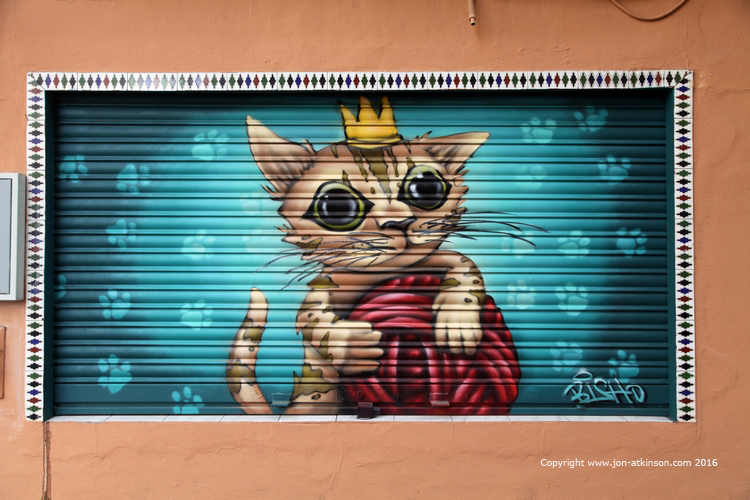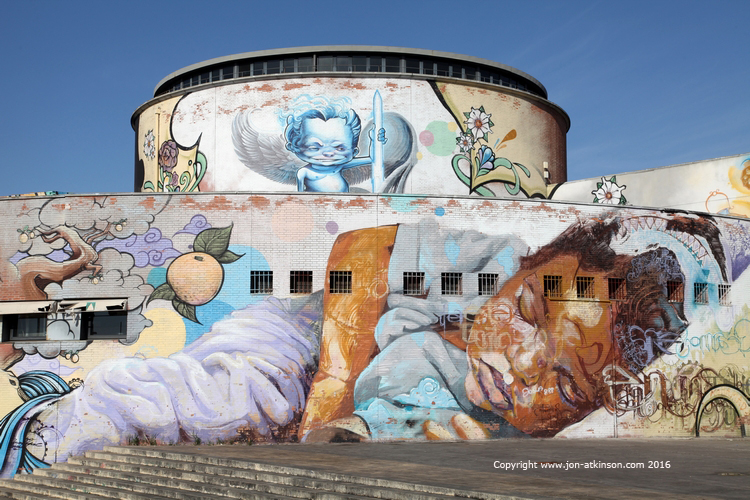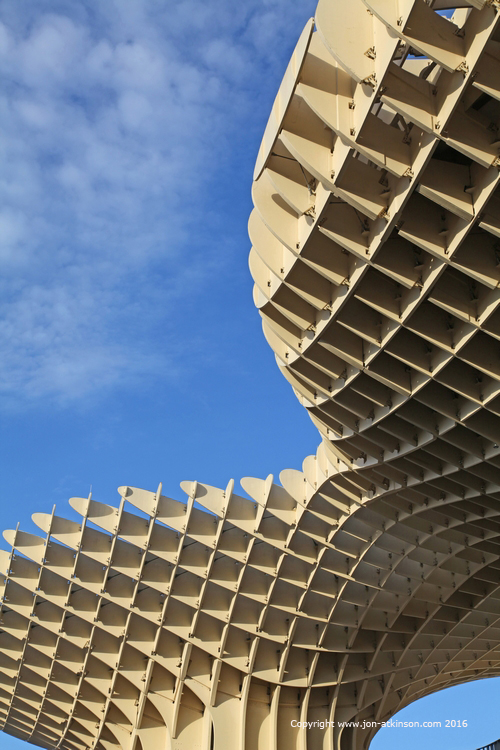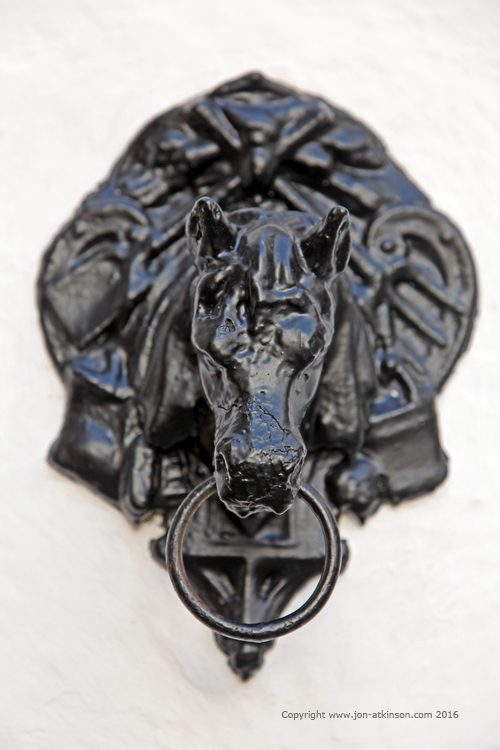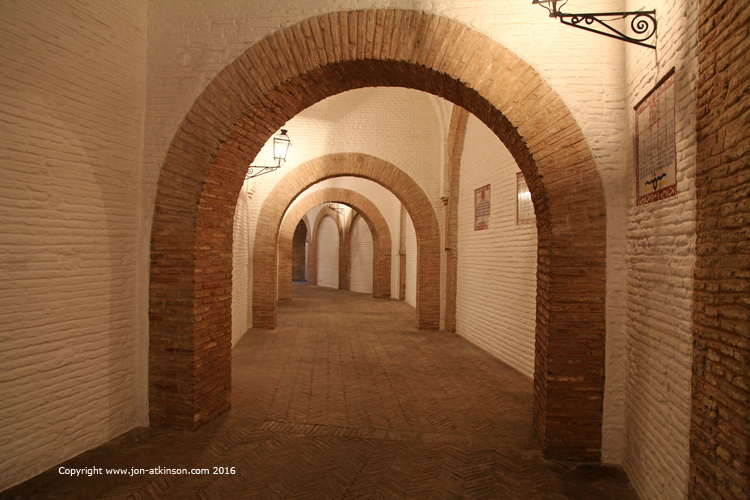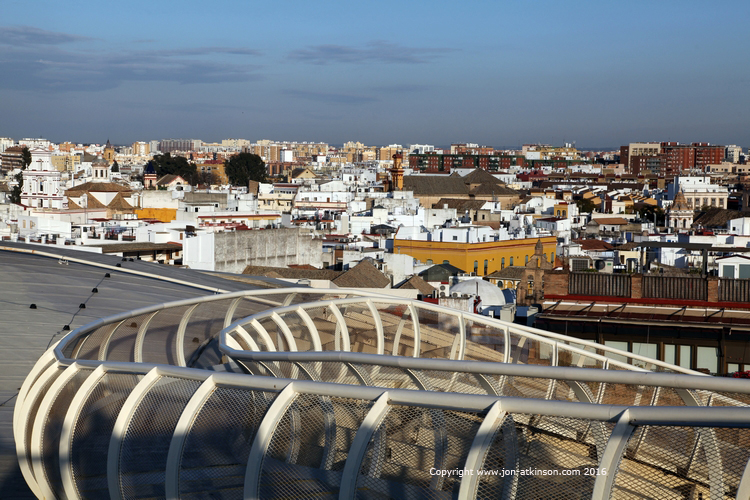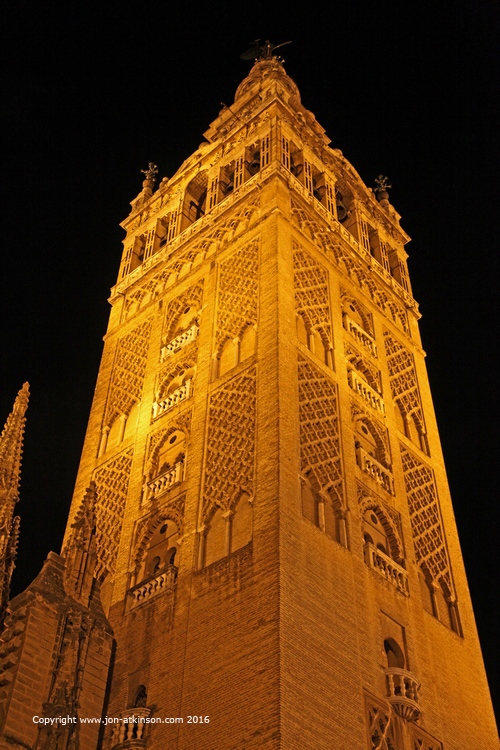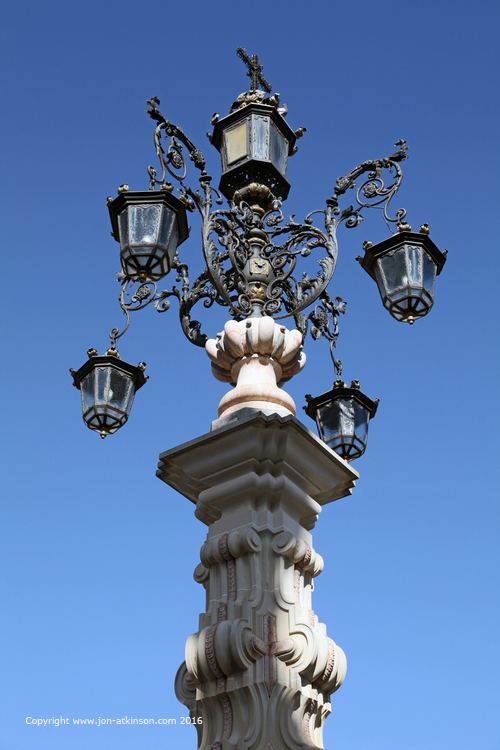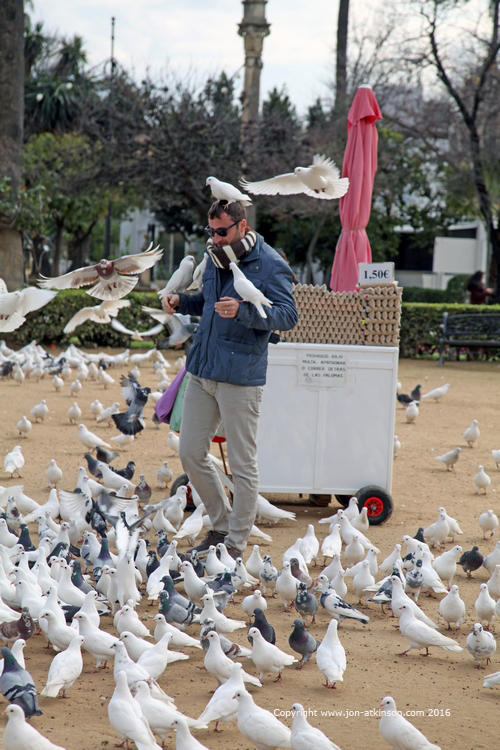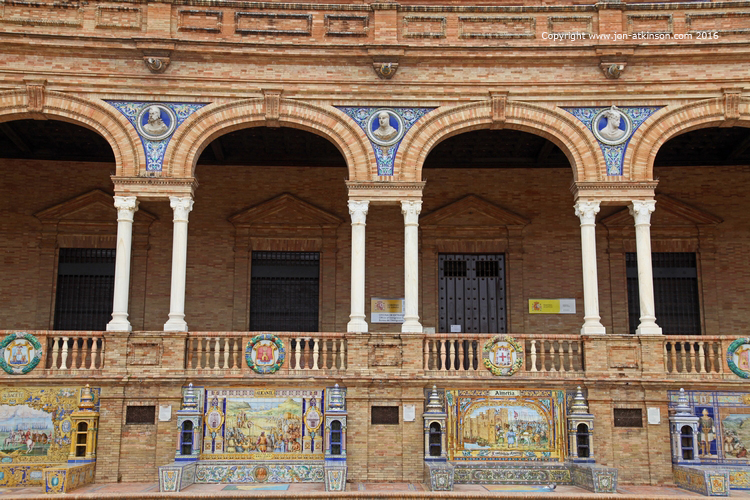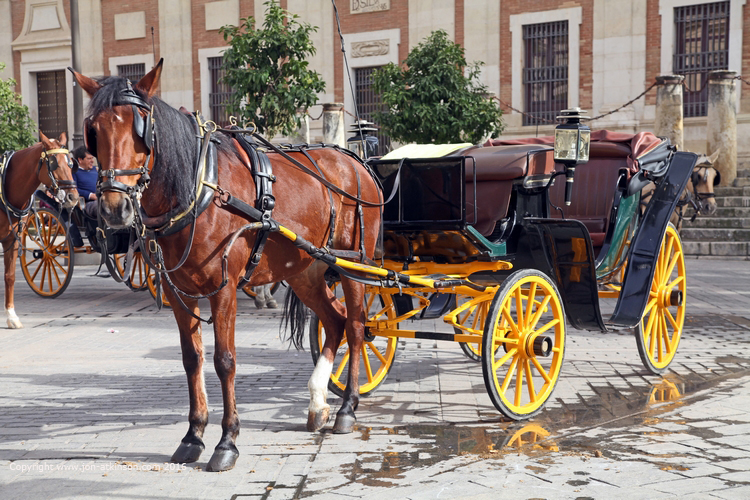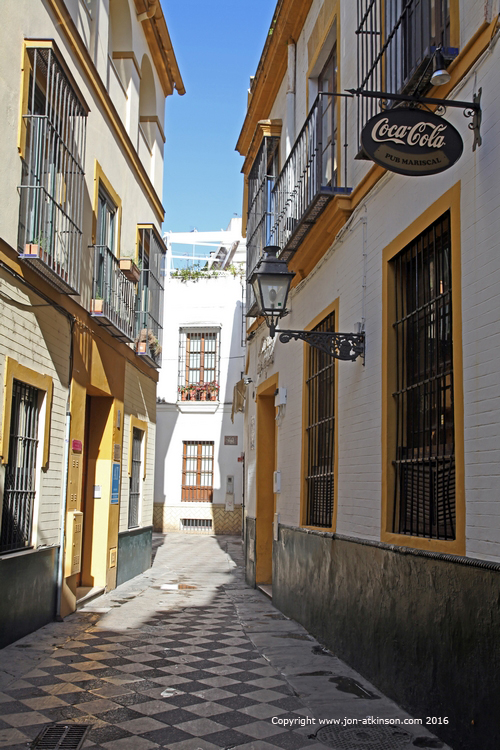Seville Scenes 1 - Shutter Art: Cat painted on shutters on a back street in Seville. |
Seville Scenes 2 - Plaza de España: The Plaza de España is an architectural complex built as the central office for the Ibero-American Exposition, a world fair held in Seville in 1929. It is located in the Maria Luisa Park, just south of Seville's historic center. |
Seville Scenes 3 - Bus Station Street Art: Street art on the rear of the bus station at Seville, Andalusia, Spain. |
Seville Scenes 4 - Plaza de Espana: The complex is decorated with azulejos, painted ceramic tiles that are popular in Seville and can be found all across the city.The building's facade as well as a row of streetlamps and the bridges on the Plaza de España are decorated with colorful azulejos.
| Seville Scenes 5 - Metropol Parasol: Construction began on June 26, 2005, with an estimated cost of 50 million euros. However, the project soon faced difficulties. By May 2007 engineering firm Arup informed the municipal authorities that the structure was technically infeasible as designed, given that a number of structural assumptions had not been tested and the design appeared to violate the limitations of known materials.
| Seville Scenes 6 - Seville Cathedral: The cathedral's construction lasted over a century, from 1401 to 1506. It is said that when the plans were drawn up, church elders stated, "Hagamos una iglesia tan hermosa y tan grandiosa que los que la vieren labrada nos tengan por locos." (Let us build a church so beautiful and so magnificent that those who see it finished will think we are mad).
|
Seville Scenes 8 - Bullring Horse ties: The rejoneador receives the bull after it enters the ring. He or she will try to provoke the bull to attack and run after the galloping horse (as in the suerte de capote). Then he stabs one or two of rejones de castigo ("lances of punishment") into the bull's back. |
Seville Scenes 9 - Bullring Interior: The Royal Bullring of Seville was built on a piece of raised ground near the River Guadalquivir, called the Baratillo Hill. When the bullring was erected, there were hardly any constructions in the vicinity. |
|
Seville Scenes 10 - Seville Views at Dusk: Seville is the capital and largest city of the autonomous community of Andalusia and the province of Seville, Spain. It is situated on the plain of the River Guadalquivir. The inhabitants of the city are known as sevillanos (feminine form: sevillanas) or hispalenses, after the Roman name of the city, Hispalis. |
Seville Scenes 11 - Seville Cathedral at Night: The Giralda is the bell tower of the Cathedral of Seville. Its height is 343 feet (105 m), and its square base is 23 feet (7.0 m) above sea level and 44 feet (13 m) long per side. The Giralda is the former minaret of the mosque that stood on the site under Muslim rule, and was built to resemble the minaret of the Koutoubia Mosque in Marrakech, Morocco. |
Seville Scenes 12 - Seville Cathedral at Night: The basilica occupies the site of the great Aljama mosque, built in the late 12th century by the Almohads, the ruling Moorish dynasty, of which the only remaining parts are the Patio de Naranjas, the Puerta del Perdon (on Calle Alemanes, on the north side), and the Giralda (formerly the minaret, now the belltower). |
Seville Scenes 13 - Street Scene: The Barrio de Santa Cruz is a labyrinth of narrow streets and alleys dating back to the old judería. These narrow streets provide protection from the oppressive sun of the Sevillian summer. Scattered through the neighborhood are several plazas or squares. |
Seville Scenes 14 - Cathedral Lamp: Street lamp in front of the Cathedral of Saint Mary of the See (Seville Cathedral) in Seville, Andalusia, Spain. |
Seville Scenes 15 - Feeding the Pigeons: Feeding pigeons in Plaza de America in Parque Maria Luisa. |
Seville Scenes 16 - Views Of Seville: Seville is approximately 2,200 years old. The passage of the various civilisations instrumental in its growth has left the city with a distinct personality, and a large and well-preserved historical centre. |
Seville Scenes 17 - Plaza de Espana Seville: The large brick building flanked at each end by a high tower has fifty eight benches in recesses decorated with tiles, depicting historic episodes for each province of Spain. |
Seville Scenes 18 - Sevilla Horse and Carriage: In the old quarter of Seville beautiful horses and carriages parked at the Plaza del Triuno just behind the Cathedral. |
Seville Scenes 19 - Monument to Christopher Columbus: On top a lion with a claw on a globe, symbolizing the Spanish empire. Behind the pedestal are a relief portrait of Columbus in a medaillon and the coat of arms of the kings. The monument has a height of 23 meter and is designed by the architect Juan Talavera. |
Seville Scenes 20 - Plaza Nueva: The monument dedicated to Fernando III of Castile that stands in the center of the square. The monarch was a leading figure of the Spanish Reconquest, which ended almost 800 years of Moorish rule. On the pedestal is a statue of Garci Perez de Vargas, a 13th-century hero of the reconquest. |
Seville Scenes 21 - Street Scene: The Casco Antiguo is the old quarter of Seville, on the east bank of the Guadalquivir river.. Of its twelve neighbourhoods, El Arenal on the riverfront was the port of Seville until the Guadalquivir silted up in the 17th century, while the neighbouring Santa Cruz neighbourhood was a Jewish quarter until the Spanish Inquisition. |

